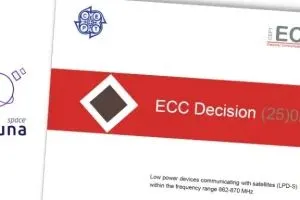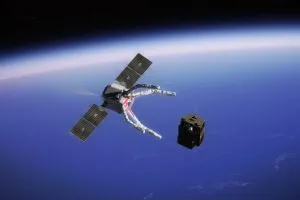 You don’t have to look further than the smart cities emerging around the world to see how they could transform our lives for the better.
You don’t have to look further than the smart cities emerging around the world to see how they could transform our lives for the better.
Take Singapore, for example. Ever since its Smart Nation initiative was launched almost a decade ago it has become a trailblazer for data-driven mobility, healthcare and citizen engagement – all designed to improve people’s quality of life in a densely-populated city with an ageing population.
Smart cities are possible only thanks to recent advances in IoT devices, sensors, connectivity and artificial intelligence, and they are now paving the way for safer, more sustainable and cost-effective buildings and transport systems.
Connecting the world
These ambitions, and achievements, are a positive leap forward. However, the emerging smart cities are still a far cry from the frustratingly slow and patchy connectivity that many rural communities experience today.
There are a number of challenges – geographical, infrastructural and economic – that must be overcome in order to bridge the digital divide.
One study found that nearly half of rural areas are considered 5G ‘not spots’, compared to just under 3% of deprived urban areas.
Connecting isolated communities in other parts of the world is even more difficult, particularly in less economically developed countries without an advanced network infrastructure and where the terrain and weather conditions are harsh and inhospitable. The investment needed to extend traditional wired or terrestrial wireless infrastructure is technically challenging and the costs often outweigh the perceived benefits.
Conflict in some parts of the world, including civil wars, has scarred communities, leaving them without amenities such as schools and hospitals, as well as connectivity after infrastructure was destroyed. Rebuilding underground networks, if they even exist, can be both prohibitively costly as well as risky if the conflict is still ongoing.
Yet these are all barriers that must be overcome if countries in Africa, Asia and South America are to realise the potential of digital technology.
Africa, in particular, is regularly touted as an emerging global player thanks to its young and growing workforce, and entrepreneurial spirit. So far, African nations have invested $4.71bn in manufacturing and launching 58 satellites, which could vastly improve their digital capabilities over the coming years.
The continent’s burgeoning mobile internet economy is testament to the growth opportunities available. In Sub-Saharan Africa alone, smartphone adoption is projected to stand at 88% by 2030, with nearly half the population using 4G and a further 17% on 5G.
Transforming infrastructure: satellite IoT connectivity
One of the biggest advantages of satellite IoT is that it uses satellites in the IoT infrastructure to efficiently transmit data between devices over long distances, even in remote or rural areas, where traditional networks may not reach.
Satellite IoT addresses many of the challenges posed by terrestrial solutions, and its benefits include:
* Ubiquitous coverage
* Rapid deployment
* Cost-effectiveness in remote areas
* Enhanced reliability.
Given its potential, it’s no surprise that the satellite IoT space is becoming increasingly crowded, with both incumbent operators and emerging startups.
The fact that it can leverage different technologies and frequency bands, each suited to specific applications and environments is what makes satellite IoT so versatile – and the frequency chosen can have a significant impact on performance, including data transmission rate and coverage area.
It’s important to weigh up the benefits and potential drawbacks of each band before choosing a satellite IoT provider.
* L-Band offers robust penetration and reliability with less susceptibility to atmospheric interference, making it ideal for critical communications, though it is limited by lower bandwidth.
* Ka/Ku Bands provide higher bandwidth for faster data transmission and are suitable for broadband services. While they can be sensitive to weather conditions such as rain fade, advances in satellite technology and ground infrastructure are continuously improving resilience, ensuring reliable connectivity even in adverse weather.
* The ISM band, being unlicensed and free, is attractive for low-cost IoT applications but faces challenges from signal interference due to the multitude of devices operating within this range.
* VHF, known for its extensive coverage and low power consumption, supports long-distance communication, yet is constrained by lower data rates and potential congestion, limiting its suitability for data intensive IoT applications.
Beyond frequency bands, other technological considerations play a crucial role in the suitability of satellite IoT solutions. These include the satellite’s orbital placement (for example, GEO, MEO, Low Earth Orbit (LEO); the modulation and coding schemes used; and the overall architecture of the satellite network.
The satellite industry has responded to the challenges with innovative and cost-effective solutions, including LEO satellite, and it is likely prices will drop further while capabilities increase, enabling more people globally to access faster internet speeds.
Governments and enterprises around the world increasingly acknowledge the transformative potential of satellite IoT and are now investing in the infrastructure to ensure IoT connectivity even where there are significant barriers to overcome.
The national telecommunications company of Argentina, ARSAT, is one such example. At the start of last year we announced a new partnership to deliver a solution that would help ARSAT bridge the digital divide between towns and cities around the country.
This solution incorporates an IoT-optimised waveform and a cloud-based network management system powered by technology from our strategic partner hiSky, a key provider of satellite agile IoT networks.
It will also support better disaster recovery and mitigation, since users will be able to hone in on data where there are concerns about environmental threats. Sensor data is collected and transmitted using satellite IoT connectivity solutions for analysis. Flooding is the ‘most recurrent climate hazard’ in Argentina, but the technology can also mitigate the impact of wildfire threats, deforestation, water scarcity, earthquakes and volcanoes.
With these capabilities, ARSAT will then be able to move into other markets such as agriculture, oil, gas, energy, mining, fleet management and construction in line with demand.
In the case of agriculture data from sensors on machinery, livestock and in the soil could detect minute changes in near real-time, so farmers can make faster and more accurate decisions to improve crop yields.
Focus on flood prevention
The threat of flooding in Argentina means that the government has deployed hundreds of weather stations across vulnerable regions. These stations were tasked with monitoring key environmental parameters, including rainfall and water levels, with the collected data being transmitted back via satellite.
To achieve this, two challenges had to be overcome first:
* Data volume and cost: an extensive network of weather stations generated significant amounts of data. Transmitting this data over satellite posed challenges in the costs of data transmission and available solutions that could cope with this.
* Scalability: the system has to be scalable in order to handle increasing data volumes from an expanding network of sensors without a corresponding spike in costs.
The first design obstacle to overcome was integration. It was important for the satellite connectivity to use standard IP protocols such as TCP or UDP and for ease of integration with readily available sensors.
Second was deployment: the solution has to be intuitive and easy to deploy by personnel without specialist training, and capable of long-term operation in remote locations.
Finally, data sovereignty had to be ensured. The entire IoT solution, including data storage and management, had to be contained within Argentina.
To achieve this, ARSAT needed low cost, low power satellite terminals that could integrate a satellite modem with a flat-panel antenna, catering to both Ku- and Ka-band frequencies.
This approach would also allow the company to reuse its existing satellite capacity and infrastructure to deploy this solution, reducing the investments that would traditionally be needed. It had to be architected in a way that facilitates straightforward integration with existing sensors and systems, while ensuring that data management and operations comply with national data sovereignty requirements.
Collaboration is key
Delivering any cutting-edge technology on large-scale projects requires close collaboration between industry, government, NGOs and local communities. There is no single solutions provider, but an evolving ecosystem of stakeholders across the world – all driven by a single vision of improving connectivity and people’s quality of life.

On the enterprise side, this includes hardware and software manufacturers and developers, leveraging the latest technologies and thinking to drive innovations and get their products to market.
We’re already starting to see the benefits of satellite IoT technology which, due to its low data requirements, is particularly suited to countries that have historically struggled to develop their network infrastructure. With every project comes new opportunities for partnerships and innovations, enabling more communities to realise the benefits of the technology.
 Electronics Weekly
Electronics Weekly



